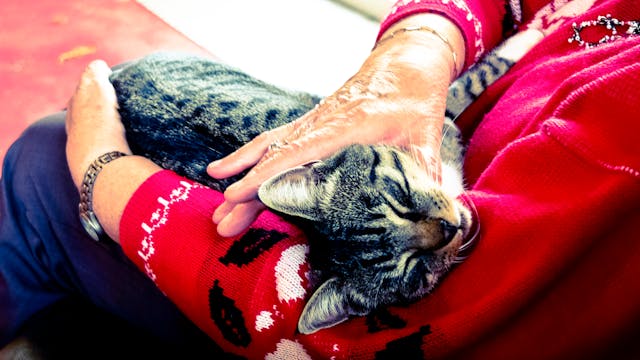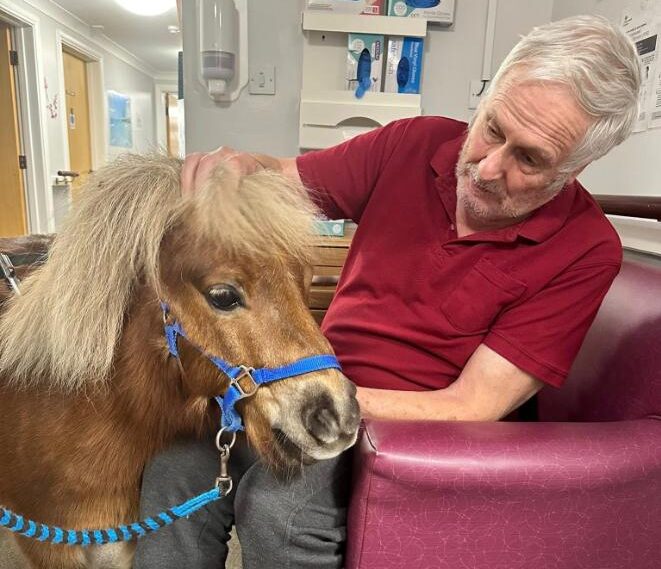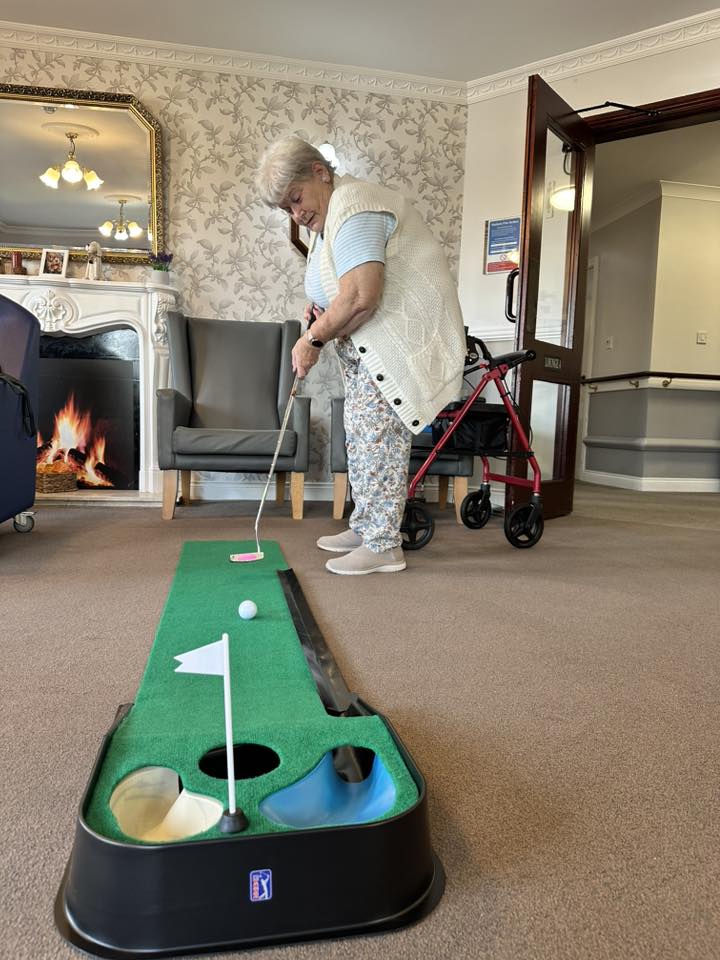What Are the Benefits of Pet Therapy?

Pet therapy is a unique form of support designed to help people cope with physical, mental, or emotional challenges. Whether in quiet one-on-one moments or lively group sessions, spending time with these calm and gentle animals can have profound effects. Our residents often find that simply stroking a dog or cuddling a small pet brings a soothing sense of calm and happiness.


Mental Health Benefits
The impact on mental health is especially significant. Regular encounters with therapy animals help ease feelings of loneliness and provide an invaluable sense of companionship. For those managing anxiety or depression, these moments create calming spaces where worries soften, and a comforting presence fills the room. For residents adjusting to new surroundings or dealing with memory challenges, the animals become trusted friends who brighten the day with their warmth.

Physical Health Benefits
But pet therapy isn’t just about emotional comfort; it also offers remarkable physical benefits. Even simple actions like reaching out to pet an animal encourage the use of fine motor skills, an important exercise for residents recovering from strokes or managing conditions like arthritis. For those able to walk or play with therapy dogs, the increased activity promotes mobility and physical health, making each visit a gentle workout filled with joy.
Many health conditions benefit from tailored therapy sessions, providing support as part of broader rehabilitation efforts. Whether it’s enhancing motor skills, reducing stress, or helping to regulate blood pressure, animals have a natural ability to aid healing in ways traditional therapies sometimes cannot reach.
Companionship
Emotionally, pet therapy fills moments with laughter, smiles, and calm. The presence of a friendly animal can melt away feelings of isolation that sometimes come with living in a care home. These interactions foster a sense of being valued and connected, which is vital for overall wellbeing.
Social Benefits & Communication
Animals also naturally encourage social interaction. In group sessions, they become the center of attention and a friendly spark that helps residents start conversations and share stories. For those who find verbal communication difficult, the non-verbal connection with animals offers a meaningful way to engage with others.
Encouraging Routine & Responsibility
Beyond the visits themselves, pet therapy plays a vital role in introducing routine and responsibility in gentle, meaningful ways within care homes. Helping to feed, brush, or care for visiting therapy animals adds structure to the day, which is especially important for residents who may be experiencing fatigue, low mood, or cognitive challenges. Having these small but purposeful tasks fosters a sense of achievement and pride, residents feel truly needed and valued when they contribute to the wellbeing of another living creature.
This sense of responsibility is incredibly powerful in a care home environment where the loss of independence can sometimes be difficult to adjust to. Pet therapy activities create opportunities for residents to engage physically and emotionally, motivating them to be more active and involved. These moments encourage movement, helping maintain or improve joint flexibility and coordination, which supports wider physical therapy goals. Alongside the emotional boost, the routine around animal care can bring calmness and stability, anchoring the day with something to look forward to and participate in regularly.
In addition, these interactions can help build confidence and enhance residents’ self-worth, improving overall wellbeing. The gentle rhythm of caring for an animal, feeding, grooming, or simply spending quiet time together—provides comfort and reassurance, breaking through feelings of isolation that can be common in care home settings. Ultimately, routine and responsibility through pet therapy are not just beneficial activities; they become pillars of emotional and physical health, nurturing residents in an environment that respects and values their contributions.
Such structured involvement through animal-assisted therapy is a precious and effective way to enrich daily life at Hillside Lodge Care Home, promoting independence, joy, and a renewed sense of purpose.
The Power of Dogs & Other Therapy Animals
While therapy dogs are the most common visitors, many different animals bring their own special touch. From quiet rabbits to lively guinea pigs, and sometimes even miniature horses, each animal offers unique qualities that keep therapy sessions fresh, stimulating, and enjoyable for everyone involved.
Discover Life At Hillside
If you’re looking for a caring and compassionate home where your loved one can thrive, Hillside Lodge Care Home warmly welcomes you. Experience firsthand how our dedicated team and uplifting programs that create a nurturing environment full of connection.
Book a visit today to tour our beautiful home, meet our friendly staff, and see the special ways we support each resident’s wellbeing. Let us show you how small moments, from a wagging tail to a gentle purr, can transform care into something truly extraordinary.
Contact us now to arrange your visit or speak with our care team about how Hillside Lodge can become a place your family can feel proud to call home.






